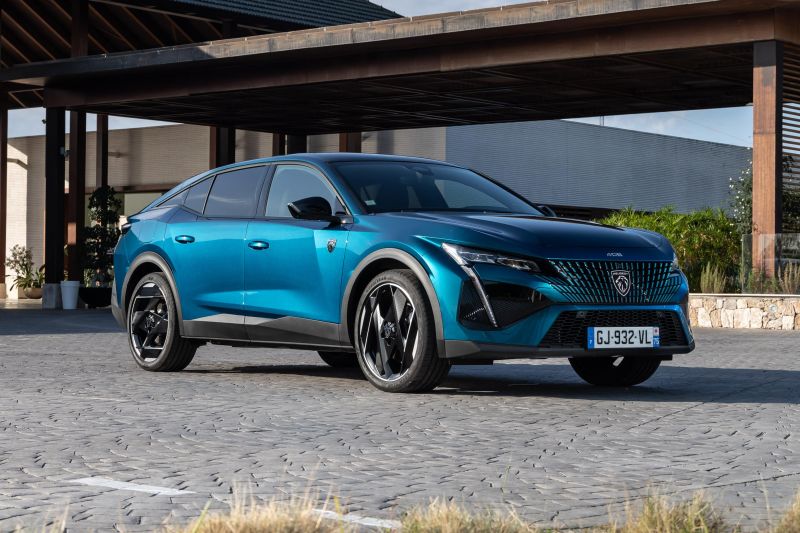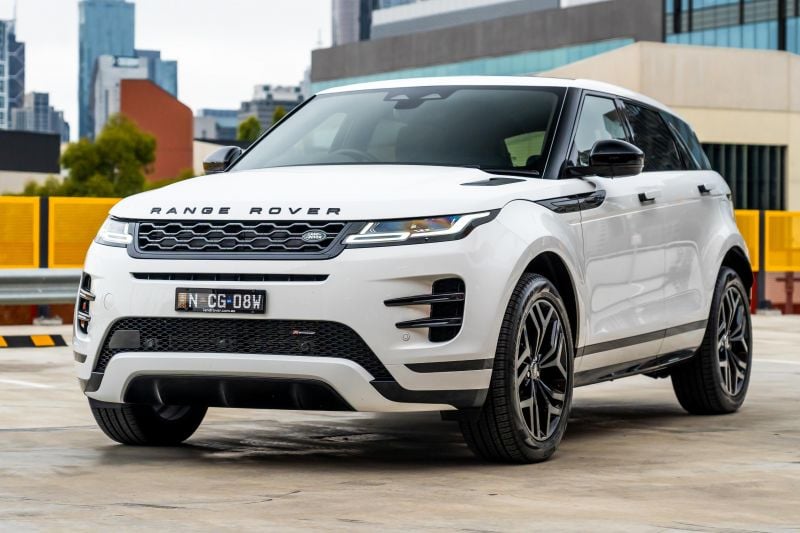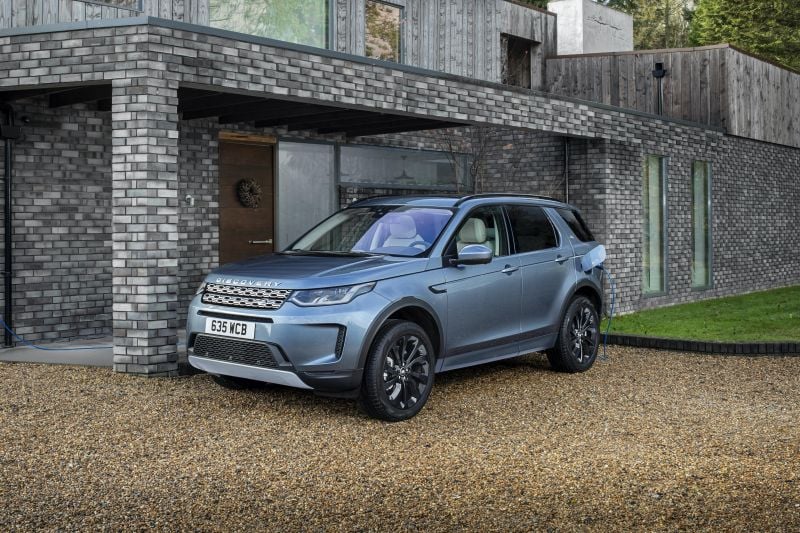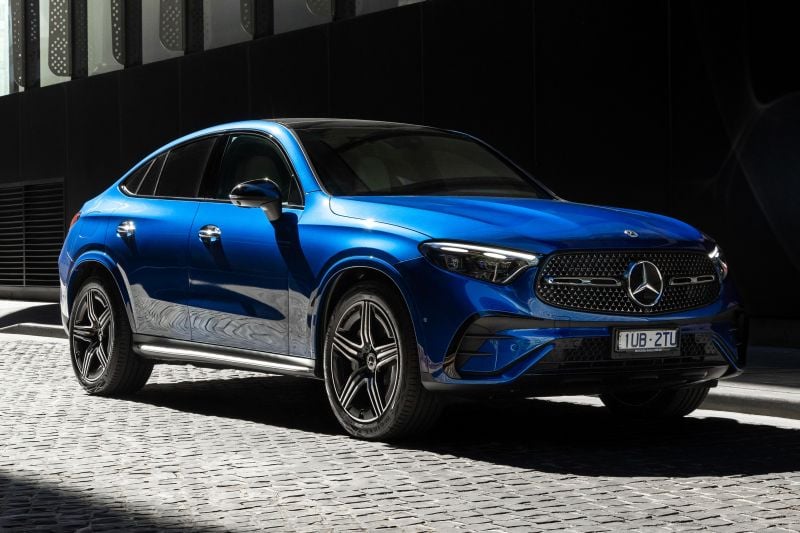Premium medium SUVs command a higher price tag than your average family runaround, but that doesn’t mean they have to cost you more at the pump.
The majority of the cars in this segment now offer some form of electrification, and the hybrid technologies available have pushed fuel consumption down compared to the gas guzzlers of yesteryear.
We’ve gathered the data, using claimed combined fuel economy figures provided by manufacturers, to find out which premium medium SUV is the most fuel efficient.
We will cover electric cars and their range figures in a separate article.
These are the cars featuring an internal combustion engine that sit within the medium SUV over $60k category in the VFACTS sales charts published by the Federal Chamber of Automotive Industries (FCAI).
We’ve also measured based on the variant with the best fuel economy in the range, as some trim or powertrain options may see the figures quoted here increase slightly.
Lexus NX
By the numbers the Lexus NX is the most efficient mid-sized SUV on sale, but there are a couple of caveats attached.
Firstly, the fuel-sipping PHEV variant of the NX is currently unavailable to purchase in Australia, as orders are on hold for the foreseeable future due to supply issues. Lexus Australia is confident that orders will re-open by the end of the year.
In addition, the claimed fuel economy of the Lexus NX can be difficult to replicate in the real world.
The 1.3L/100km figure is contingent on having a fully charged battery; as is always the case with plug-in hybrids, a flat lithium-ion battery will make it very hard to come close to that figure.
Nevertheless, the NX 450h+ F Sport can be had for $90,948 before on-road costs.
| Lexus NX | |
|---|---|
| Fuel economy (claimed) | 1.3L/100km |
| Fuel tank capacity | 55L |
| Fuel type | 95 RON |
BUY: Get in touch with a dealer about a Lexus NX
MORE: Everything Lexus NX
Peugeot 408
You’ll start to notice a trend here – all the top performers in medium SUV fuel testing are PHEVs, and the Peugeot 408 is a member of that club.
The sleek French coupe-style SUV has a claimed fuel consumption of 1.5L/100km (with the same caveats as the NX above), but also comes with the smallest fuel tank of any car in this segment. Electric-only range is capped at 60km.
A single variant is available – the 408 GT Fastback plug-in hybrid – and it’s priced at $67,990 plus on-road costs.
Standard features include a 10-inch digital instrument cluster, 10-inch touchscreen infotainment system, wireless smartphone mirroring, and power-adjustable front seats with heating and massaging functions.
| Peugeot 408 | |
|---|---|
| Fuel economy (claimed) | 1.5L/100km |
| Fuel tank capacity | 40L |
| Fuel type | 95 RON |
BUY: Get in touch with a dealer about a Peugeot 408
MORE: Everything Peugeot 408
Volvo XC60
The Volvo XC60 makes it a sweep of the podium for plug-in hybrid power.
While a mild-hybrid version is available, you’ll have to stretch to the top of the line XC60 Recharge T8 plug-in hybrid to save the most on fuel. Claimed fuel economy is 1.6L/100km, although once again that’s contingent on having a charged lithium-ion battery.
The PHEV is also capable of travelling 81km without using any fuel at all.
As well as being efficient, the XC60 also has a large 71L fuel tank to maximise distance between fill-ups.
Recharge T8 variants are priced between $92,990 before on-road costs and $101,990 plus on-roads.
| Volvo XC60 | |
|---|---|
| Fuel economy (claimed) | 1.6L/100km |
| Fuel tank capacity | 71L |
| Fuel type | 95 RON |
BUY: Get in touch with a dealer about a Volvo XC60
MORE: Everything Volvo XC60
Audi Q5
The Q5 is a long-serving model in the Audi stable, but the availability of a plug-in hybrid powertrain proves it’s keeping up with the times.
Claimed fuel economy is 2.0L/100km on the combined cycle, though real-world mileage will vary based on the state of charge in the lithium-ion battery as with all plug-in hybrids.
The Q5 55 TFSI e quattro S line is more expensive than other PHEVs at $108,100 before on-road costs, but it also comes fully kitted out with options from the factory.
You can expect a panoramic sunroof, 360-degree cameras, heated front seats, and Nappa leather upholstery, among other features.
| Audi Q5 | |
|---|---|
| Fuel economy (claimed) | 2.0L/100km |
| Fuel tank capacity | 54L |
| Fuel type | 95 RON |
BUY: Get in touch with a dealer about a Audi Q5
MORE: Everything Audi Q5
Mazda CX-60
The Mazda CX-60 comes in myriad variants, including three frugal PHEV configurations that each consume 2.1L/100km.
As with all PHEVs on this list, that figure is reliant on having a charged lithium-ion battery pack.
Starting from $72,900, the plug-in CX-60 has an electric-only range of 76km and comes equipped with a 10.25-inch infotainment system, 12.3-inch digital instrument cluster, and wireless smartphone mirroring as standard.
All Mazda vehicles are backed by a five-year, unlimited-kilometre warranty.
| Mazda CX-60 | |
|---|---|
| Fuel economy (claimed) | 2.1L/100km |
| Fuel tank capacity | 50L |
| Fuel type | 95 RON |
BUY: Get in touch with a dealer about a Mazda CX-60
MORE: Everything Mazda CX-60
Range Rover Evoque
Range Rover has traditionally been known as a leader in luxury rather than efficiency, but the Evoque demonstrates a transition by the brand towards building more eco-friendly machines.
The current Evoque PHEV – or P300e R-Dynamic HSE – starts from $106,675 plus on-road costs, and has an electric range of 66km. Claimed fuel economy is 2.1L/100km on the combined cycle, provided you’re able to charge the battery.
Interior highlights include 14-way electric front seats with driver memory, Ebony Windsor leather upholstery, and a Meridian sound system.
A total of 419 examples of the baby Range Rover were sold in 2023.
| Range Rover Evoque | |
|---|---|
| Fuel economy (claimed) | 2.1L/100km |
| Fuel tank capacity | 57L |
| Fuel type | 95 RON |
BUY: Get in touch with a dealer about a Range Rover Evoque
MORE: Everything Range Rover Evoque
Land Rover Discovery Sport
Unsurprisingly, you can’t split the Evoque and Discovery Sport PHEVs, as they both share the same powertrain.
That means the same 2.1L/100km claimed fuel use figure, with the same PHEV caveats.
The Land Rover badged car comes in slightly cheaper at $102,125 plus on-roads, but it was less popular among Australian buyers last year.
With the Discovery Sport you get the same electric range as the Evoque, and features such as an 11.4-inch touchscreen infotainment system, 12.3-inch digital instrument cluster, and wireless smartphone charging.
Land Rover also offers a suite of interior and exterior customisation options for the Discovery Sport.
| Land Rover Discovery Sport | |
|---|---|
| Fuel economy (claimed) | 2.1L/100km |
| Fuel tank capacity | 57L |
| Fuel type | 95 RON |
BUY: Get in touch with a dealer about a Land Rover Discovery Sport
MORE: Everything Land Rover Discovery Sport
BMW X3
The final PHEV on this list is the BMW X3 xDrive30e M Sport, which has a claimed fuel consumption figure of 3.2L/100km.
Claimed fuel economy is 3.2L/100km, a reflection of its smaller battery pack and its performance on the official emissions drive test.
Priced at $111,800 before on-road costs, the xDrive 30e M Sport can travel a maximum of 41km on electric power, and has a 50L fuel tank.
In addition to the features equipped to lower model grades, the PHEV gains a panoramic sunroof and front row seat heating.
| BMW X3 | |
|---|---|
| Fuel economy (claimed) | 3.2L/100km |
| Fuel tank capacity | 50L |
| Fuel type | 95 RON |
BUY: Get in touch with a dealer about a BMW X3
MORE: Everything BMW X3
Mercedes-Benz GLB
The most frugal Mercedes-Benz GLB is actually the base model.
The $72,900 before on-road costs GLB 200 is powered by a 1.3-litre turbocharged four-cylinder petrol engine that produces 120kW of power and 270Nm of torque, while consuming 6.6L/100km.
Being the base model the GLB 200 does miss out on some equipment, although the standard list of kit still includes a panoramic sunroof, 10.25-inch digital instrument cluster, 10.25-inch touchscreen infotainment system, and wireless smartphone mirroring.
The Mercedes-Benz GLB is covered by a five-year, unlimited-kilometre warranty.
| Mercedes-Benz GLB | |
|---|---|
| Fuel economy (claimed) | 6.6L/100km |
| Fuel tank capacity | 52L |
| Fuel type | 95 RON |
BUY: Get in touch with a dealer about a Mercedes-Benz GLB
MORE: Everything Mercedes-Benz GLB
Alfa Romeo Stelvio
Alfa Romeo is now an established player in the SUV space, and the Stelvio is its largest offering.
Claimed fuel economy is 7.0L/100km.
Two variants are available, priced between $76,450 and $82,950 before on-road costs, powered by the same 2.0-litre turbocharged four-cylinder petrol engine producing 206kW of power and 400Nm of torque.
All examples are fitted with a 12.3-inch digital instrument cluster, an 8.8-inch touchscreen infotainment system, heated front seats, and a heated steering wheel.
| Alfa Romeo Stelvio | |
|---|---|
| Fuel economy (claimed) | 7.0L/100km |
| Fuel tank capacity | 64L |
| Fuel type | 95 RON |
BUY: Get in touch with a dealer about a Alfa Romeo Stelvio
MORE: Everything Alfa Romeo Stelvio
Mercedes-Benz GLC Wagon
The 2024 Mercedes-Benz GLC Class comes in two body styles – wagon and coupe – with the former coming in over $10,000 cheaper at $103,370 before on-road costs.
As with other ICE-only models on this list, the cheapest GLC is also the least thirsty with its 7.7L/100km claim. That’s to be expected, given it sits below the fire-breathing AMG in the range.
The 2024 Mercedes-Benz GLC 300 4Matic wagon and coupe are both powered by a 2.0-litre turbocharged four-cylinder petrol engine with 190kW of power and 400Nm of torque.
Wagon sales were significantly higher in 2023, with 3631 sold as opposed to 1799 coupes.
| Mercedes-Benz GLC Wagon | |
|---|---|
| Fuel economy (claimed) | 7.7L/100km |
| Fuel tank capacity | 62L |
| Fuel type | 95 RON |
BUY: Get in touch with a dealer about a Mercedes-Benz GLC Wagon
MORE: Everything Mercedes-Benz GLC Wagon
Mercedes-Benz GLC Coupe
Want a Mercedes-Benz GLC but can’t come around to the styling? Perhaps the GLC coupe is the car for you.
There’s less room in the boot here, and you’ll pay no less than $113,900 plus on-roads for the wagon’s curvier cousin. Claimed fuel economy is the same 7.7L/100km.
For the extra outlay you gain sports suspension parts and some aesthetic upgrades.
The efficiency figures are identical across the two models.
| Mercedes-Benz GLC Coupe | |
|---|---|
| Fuel economy (claimed) | 7.7L/100km |
| Fuel tank capacity | 62L |
| Fuel type | 95 RON |
BUY: Get in touch with a dealer about a Mercedes-Benz GLC Coupe
MORE: Everything Mercedes-Benz GLC Coupe
BMW X4
Going head-to-head with the Mercedes-Benz GLC Coupe is the BMW X4, which comes in at a similar price and also features a sloping coupe roofline.
The X4 also claims identical 7.7L/100km fuel economy figures, although the BMW has a slightly larger fuel tank.
No plug-in hybrid or electric variants are available, so you’ll need to buy an X3 if that’s what you’re after.
Pricing starts at $96,700 before on-road costs for the xDrive 20i.
| BMW X4 | |
|---|---|
| Fuel economy (claimed) | 7.7L/100km |
| Fuel tank capacity | 65L |
| Fuel type | 95 RON |
BUY: Get in touch with a dealer about a BMW X4
MORE: Everything BMW X4
Cupra Ateca
The Ateca is the oldest member of the Cupra line-up, with roots dating back to 2016.
The 2024 Cupra Ateca is powered by a 2.0-litre turbocharged four-cylinder engine producing 221kW of power and 400Nm of torque. Claimed fuel economy is 7.8L/100km.
It’s a performance-focused model that requires 98 RON premium unleaded fuel, so trips to the pump will be more costly.
Pricing sits at $68,990 before on-road costs.
| Cupra Ateca | |
|---|---|
| Fuel economy (claimed) | 7.8L/100km |
| Fuel tank capacity | 55L |
| Fuel type | 98 RON |
BUY: Get in touch with a dealer about a Cupra Ateca
MORE: Everything Cupra Ateca
Maserati Grecale
The Maserati Grecale arrived in Australia last year, asking the highest price of any medium SUV on the market in Trofeo trim.
You’ll save $67,000 in getting behind the wheel of the base Grecale GT, which is powered by a more efficient 2.0-litre turbocharged four-cylinder engine and 48V mild-hybrid system producing a combined 220kW of power and 450Nm of torque.
Claimed fuel economy is 8.1L/100km on the combined cycle.
The GT is equipped with a 12.3-inch digital instrument cluster, 12.3-inch touchscreen infotainment system, wireless smartphone mirroring and a second 8.8-inch lower screen.
| Maserati Grecale | |
|---|---|
| Fuel economy (claimed) | 8.1L/100km |
| Fuel tank capacity | 64L |
| Fuel type | 95 RON |
BUY: Get in touch with a dealer about a Maserati Grecale
MORE: Everything Maserati Grecale
Porsche Macan
An electric version of the Macan is on the way, but until then the most efficient model is petrol-powered.
Under the bonnet is a 2.0-litre turbocharged four-cylinder engine with 195kW of power and 400Nm of torque, while fuel economy is quoted at 9.3L/100km.
While relatively inefficient in this segment, the Macan has the largest fuel tank of any mid-sized SUV, boosting its credentials as a cross-country cruiser.
The base Macan costs $93,800 plus on-road costs.
| Porsche Macan | |
|---|---|
| Fuel economy (claimed) | 9.3L/100km |
| Fuel tank capacity | 75L |
| Fuel type | 95 RON |
BUY: Get in touch with a dealer about a Porsche Macan
MORE: Everything Porsche Macan
Genesis GV70
Rounding out the segment is the Genesis GV70, which just sneaks in under the 10L/100km mark in base form.
The entry-level GV70 is powered by a 2.5-litre turbocharged four-cylinder engine with 224kW of power and 422Nm of torque, while flagship examples house a 3.5-litre turbocharged six-cylinder.
Examples start at $70,500 plus on-road costs and come standard with a 14.5-inch touchscreen infotainment system, 8.0-inch digital instrument cluster, a panoramic sunroof, and power-adjustable front seats.
| Genesis GV70 | |
|---|---|
| Fuel economy (claimed) | 9.8L/100km |
| Fuel tank capacity | 66L |
| Fuel type | 95 RON |
BUY: Get in touch with a dealer about a Genesis GV70
MORE: Everything Genesis GV70



















